When it comes to medical billing, ensuring that you use the correct skin tag ICD 10 code is crucial for accurate reimbursement and avoiding claim denials. Skin tags, or acrochordons, are benign growths on the skin that may require removal for medical or cosmetic reasons. In this article, we’ll dive into the importance of correctly using skin tag ICD 10 codes for billing purposes, providing you with key information to help avoid costly Medical billing mistakes and ensure your practice gets reimbursed efficiently.
Understanding Skin Tag ICD 10 Codes for Accurate Billing
Accurate medical coding is vital for any healthcare provider to ensure proper payment from insurance companies. When it comes to skin tag ICD 10, understanding the proper classification of these benign growths is essential. Skin tags are usually harmless but may become irritated or inflamed, leading to discomfort or the need for medical intervention.
The ICD 10 code for skin tags is used by medical coders to describe this condition, as well as to ensure that the correct procedure codes are linked to the diagnosis. For skin tags that require removal, healthcare professionals should use a billable code to ensure reimbursement for the procedure.
Key ICD 10 Codes for Skin Tags
There are several key ICD 10 codes associated with skin tags, some of which are billable while others are not. Using the correct ICD 10 code for skin tags helps avoid insurance rejections and delayed payments. Below is a breakdown of some commonly used skin tag ICD 10 codes:
Billable ICD 10 Codes for Skin Tags
- L91.8 – Other Hypertrophic Disorders of the Skin
This code is used for skin tags that are diagnosed when no more specific diagnosis is available. It’s a catch-all code for hypertrophic skin conditions, including skin tags in various locations, such as the neck or groin. - D23.9 – Benign Neoplasm of Skin, Unspecified
This code applies to skin tags that are classified as benign neoplasms. If the skin tag is located on the eyelid, face, or any other specific location, this code can be used to classify the growth. - L98.8 – Other Specified Disorders of the Skin and Subcutaneous Tissue
Healthcare providers use this code when skin tags fall under ‘other specified disorders’ and may include inflamed or bleeding skin tags. - K64.4 – Residual Hemorrhoidal Skin Tags
This code is used for skin tags that result from hemorrhoids and remain after the hemorrhoids have healed. If these residual hemorrhoidal skin tags require removal, this ICD 10 code is necessary.
Non-Billable ICD 10 Codes for Skin Tags
- L72.3 – Miliaria Rubra
This code applies to heat rash or “prickly heat,” which can sometimes be confused with skin tags. However, miliaria rubra is a different condition and should not be used to code skin tag removal. - L72.0 – Epidermal Cyst
Code epidermal cysts separately, as they do not qualify for billing under skin tag ICD 10 codes, since they are often mistaken for skin tags.

Why Proper ICD 10 Coding for Skin Tags Matters
For dermatologists and healthcare providers, knowing how to use skin tag ICD 10 codes correctly is essential for maintaining accurate billing practices. Incorrect or inaccurate coding can lead to:
- Claim Denials: Insurers may reject claims that don’t meet the criteria for medical necessity or misclassified conditions.
- Payment Delays: Improper coding can delay payments and result in follow-up procedures to rectify the issue.
- Compliance Risks: Improper coding or documentation can trigger audits and compliance investigations.
Using the correct skin tag ICD 10 code ensures that the diagnosis is accurate, facilitating timely and proper reimbursement from insurance providers. It also enhances the operational efficiency of healthcare practices by reducing administrative burdens.
How to Ensure Proper ICD 10 Skin Tag Coding in Your Practice
To avoid billing errors and ensure that your practice is properly reimbursed, follow these best practices for skin tag ICD 10 coding:
- Document Thoroughly: Ensure that you include all necessary details about the skin tag, such as its location, symptoms (irritation, inflammation, or bleeding), and medical necessity for removal.
- Use the Most Specific Code: Whenever possible, avoid using the generic L91.8 and instead choose the most specific code for the skin tag’s location and condition.
- Apply Modifiers When Necessary: If multiple procedures are performed on the same patient, be sure to apply the appropriate modifiers to ensure proper reimbursement.
Conclusion: Mastering Skin Tag ICD 10 for Efficient Billing
Understanding and using the correct skin tag ICD 10 codes is crucial for ensuring that your practice maintains accurate billing practices and receives the appropriate reimbursement. By using the right ICD 10 code for skin tags, healthcare providers can avoid common billing pitfalls, reduce the risk of claim denials, and ensure that patients receive the care they need without unnecessary delays.
FAQs About Skin Tag ICD 10 Codes
Q: What is the main ICD 10 code for skin tags?
The main ICD 10 code for skin tags is L91.8, which is used for other hypertrophic disorders of the skin.
Q: How do I know which ICD 10 code to use for skin tag removal?
Use L91.8 for general skin tags, or D23.9 if the skin tag is classified as a benign neoplasm. If the skin tag is inflamed, use L98.8.
Q: Can insurance cover skin tag removal?
Insurance will cover skin tag removal if it’s medically necessary (such as irritation, bleeding, or inflammation). Cosmetic removal is not typically covered.
By following these guidelines and using the right skin tag ICD 10 codes, you can ensure accurate medical billing and smooth reimbursement processes for your practice.


